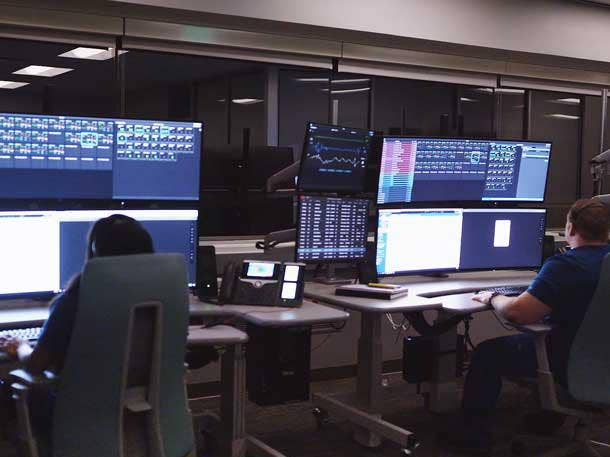Intel Commits $50M In Tech Funding To ‘Combat’ Coronavirus
'Intel is committed to accelerating access to technology that can combat the current pandemic and enable new technology and scientific discovery that better prepares society for future crises,' Intel CEO Bob Swan says.

Intel is pledging an additional $50 million to coronavirus relief efforts, but this time, the company is focusing its financial resources on using technology to improve the COVID-19 response as well as online learning for underserved communities.
The Santa Clara, Calif.-based company announced on Tuesday that it is committing roughly $40 million to fund two efforts – the Intel COVID-19 Response and Readiness and Online Learning initiatives – and allocating an additional $10 million for partner- and employee-led relief projects.
[Related: Intel CEO Bob Swan: 'Our Cultural Evolution' A Big Focus In 2020]
“The world faces an enormous challenge in fighting COVID-19. Intel is committed to accelerating access to technology that can combat the current pandemic and enable new technology and scientific discovery that better prepares society for future crises,” Intel CEO Bob Swan said in a statement. “We hope that by sharing our expertise, resources and technology, we can help to accelerate work that saves lives and expands access to critical services around the world during this challenging time.”
The new funds were announced after Intel said it would donate $1 million to the International Red Cross, $4 million to local relief efforts and another $2 million to match employee donations to food banks, school districts and children’s hospitals over the past few weeks. The company is also donating 1 million pieces of personal protective equipment to healthcare workers.
For the part of the roughly $40 million that will support the Intel COVID-19 Response and Readiness initiatives, the company said it will provide funding to accelerate partner and customer deployments of artificial intelligence, high-performance computing and edge-to-cloud service delivery for diagnosis, treatment and vaccine development for the coronavirus.
Intel said it will also support healthcare and life sciences manufacturers in their efforts to “increase the availability of technology and solutions used by hospitals to diagnose and treat COVID-19.” The company is also looking to form industry alliances that improve the global capacity and capability for diagnosing and treating the virus in addition to supporting polices that improve future pandemic responses.
On the education side, the company said the Intel Online Learning Initiative will use funds to support education-focused nonprofit organizations and business partners to provide devices and online learning resources to students who have not had access to such technology.
To do this, Intel said it is partnering with public school districts to facilitate the donations of PCs and enable online virtual resources, study-at-home guides and device connectivity assistance. The company will initially focus its efforts on underserved communities in the United States and the expand globally.
As for final $10 million of the new $50 million fund, Intel said it will support technology relief projects led by external partners and employees to address critical needs in communities.
The company said it is already working on multiple partner relief projects. This includes work with India’s Council of Scientific and Industry Research and International Institute of Information Technology to deliver Intel-based PC and server solutions that can expedite and lower the costs of COVID-19 testing and coronavirus genome sequencing.
Other companies partnering with Intel include Dyson for a new kind of ventilator that will use Intel FPGAs, Medical Informatics Corp. for its Sickbay platform that enables virtual patient monitoring and the National Association of Software and Services Companies in India for a new application ecosystem and multi-cloud system that enables widescale diagnostics and outbreak predictions.
Erik Stromquist, president of CTL, Portland, Ore.-based system builder that sells Intel-based Chromebooks to schools, said the sudden closures of schools and the move to distance learning as a result of COVID-19 has caught many school districts off guard and unprepared.
As a result, many schools will try to get along with makeshift solutions for the rest of the school year, then come back in the fall with expanded plans, which is when more intentional investments in online learning solutions will be made, according to Stromquist.
“After this school season's over, which is just a month and a half away, they're going to get serious about how they can really pull it off,” he said. “And that's where we're going to see the big spends, the big reorganizations, more moves to Chrome, of course, and figuring out video collaboration.”
CTL has already donated Chromebooks to multiple efforts for local relief efforts in its home city of Portland, Stromquist said. Recipients have included Kaiser Permanente, which is providing the devices to COVID-19 patients in isolation, and the City of Portland’s Emergency Management Services, which is providing devices to those in need, including school districts.
While the move to online learning environments for schools has created an increase in demand for mobile PCs like Chromebooks, Stromquist said supply chains have struggled, particularly in China, where manufacturers are still recovering from a slowdown in January and February.
“We're shipping, but it's very, very difficult because the whole supply infrastructure is fractured,” he said. “It could be that you got all the supplies you need except for the AC adapters. Or you could have challenges with batteries. Or you could have challenges with some downstream component vendor that's not back up and running and went bankrupt.”
That means anything CTL has in its inventory is selling very quickly as organizations struggle to transition to a new normal and embrace a new paradigm in learning.
“Everyone's scrambling to get product here. People are willing to buy whatever you have,” Stromquist added. “Some of our slow -moving items that we didn't think we would ever sell immediately sold in the last 30 days. We just sold anything that wasn't bolted down.”